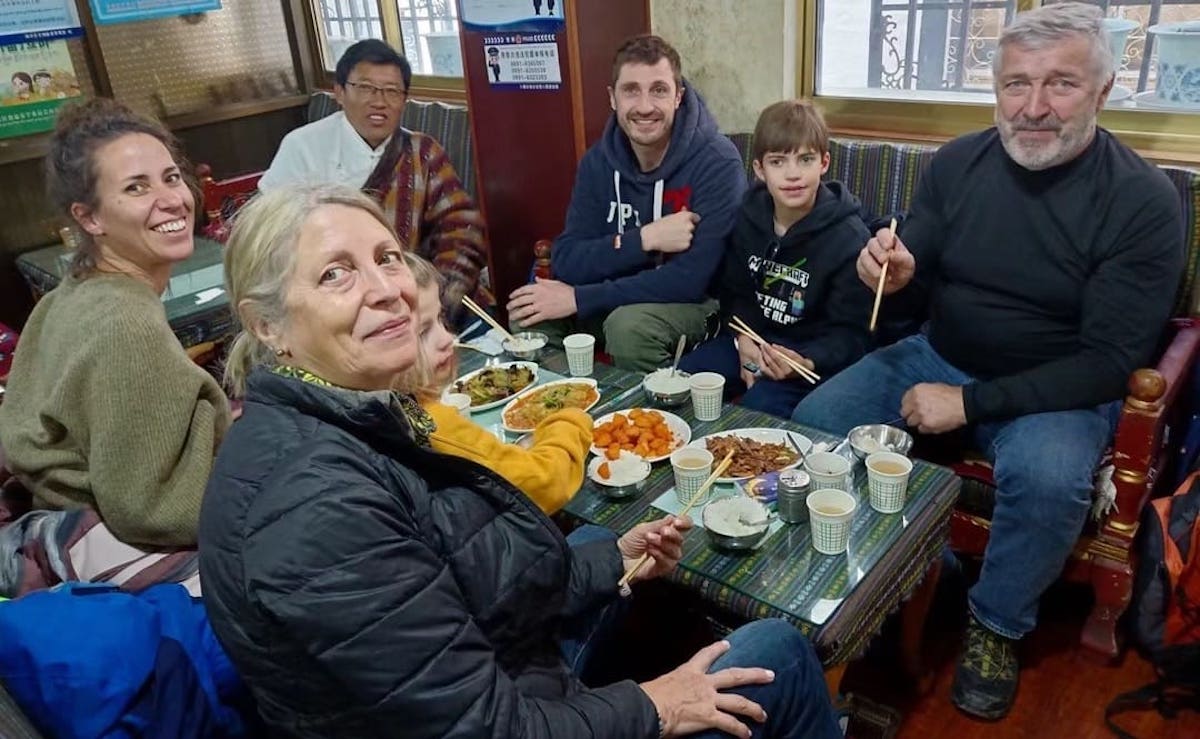
One Trip, Five Tips: Visiting Lhasa, Tibet
Embarking on a trip to Tibet is a journey into one of the world’s most spiritually rich and visually stunning destinations. Lhasa, the capital of Tibet, offers a unique blend of ancient Tibetan culture, breathtaking landscapes, and profound religious heritage. Whether you’re planning a Tibet tour or exploring Tibet travel options, here are five essential tips to enhance your experience in Lhasa.

Tibet group tour
Table of Contents
Embrace the Spiritual Heart of Tibet
Potala Palace: A Majestic Symbol of Tibetan Buddhism
No visit to Lhasa is complete without exploring the Potala Palace. Perched atop Marpo Ri Hill, this 13-story structure was once the winter residence of the Dalai Lama and remains a symbol of Tibetan Buddhism and culture. Recognized as a UNESCO World Heritage Site, the Potala Palace houses thousands of rooms, chapels, and shrines, offering a glimpse into Tibet’s spiritual and political history.

Tibet Group Tour
Jokhang Temple: The Spiritual Heartbeat of Tibet
Located in the heart of Lhasa, Jokhang Temple is considered the most sacred site in Tibetan Buddhism. Pilgrims from all over Tibet come here to prostrate themselves and offer prayers. The temple’s rich history and spiritual significance make it a must-visit for those seeking to understand the depth of Tibetan religious life.
Acclimate to the High Altitude
Lhasa sits at an elevation of approximately 3,650 meters (12,000 feet) above sea level. The thin air can lead to altitude sickness, especially for those arriving from lower elevations. To mitigate this:
- Rest Upon Arrival: Allow your body time to adjust by avoiding strenuous activities for the first 24–48 hours.
- Stay Hydrated: Drink plenty of water to help your body acclimate.
- Avoid Alcohol and Smoking: These can exacerbate symptoms of altitude sickness.
- Consult a Doctor: If you experience severe symptoms like dizziness or nausea, seek medical attention promptly.

Tibet group tour
Respect Tibetan Culture and Traditions
Tibet’s rich cultural heritage is deeply intertwined with its Buddhist traditions. To show respect:
- Dress Modestly: When visiting monasteries and temples, wear long-sleeved clothing and avoid revealing attire.
- Photography Etiquette: Always ask for permission before taking photos of monks or local people, especially in sacred spaces.
- Mind Your Manners: Avoid discussing sensitive political topics. A simple “Tashidelek” (Tibetan for “good luck”) is a warm greeting.
Explore Beyond the City: Day Trips from Lhasa
While Lhasa offers numerous attractions, the surrounding areas are equally captivating:
- Norbulingka Palace: Once the summer residence of the Dalai Lama, this palace is set amidst beautiful gardens and is a UNESCO World Heritage Site.
- Yamdrok Lake: One of Tibet’s three largest sacred lakes, known for its turquoise waters and surrounded by snow-capped mountains.
- Sera and Drepung Monasteries: Both are significant centers of Tibetan Buddhism, with Sera known for its lively debates among monks.
Plan Your Tibet Travel with a Reputable Agency
Due to Tibet’s unique political status, independent travel is restricted. All visitors must travel with an authorized tour agency. These agencies will assist in obtaining the necessary Tibet Travel Permit and ensure your itinerary complies with local regulations. Booking through a reputable agency also ensures a smoother and more enriching travel experience.

Family trip in Tibet
Final Thoughts
A Tibet trip, especially a Tibet tour centered around Lhasa, offers an unparalleled opportunity to immerse oneself in a culture that has remained largely unchanged for centuries. By respecting local traditions, acclimating to the high altitude, and planning your journey with care, you can ensure a memorable and meaningful experience in this mystical land.
Recent Posts
Visiting Tibet with Kids in Winter
Winter Trekking in Tibet
All Categories
- About Tibet
- book a Tibet tour
- Buddhism Practice
- Budget Tour
- China-Tibet Train
- Customized Tibet tour
- Historical Sites
- Hot Springs in Tibet
- News
- Photography in Tibet
- Tibet attraction
- Tibet Group Visa
- Tibet Motorcycle Tour
- Tibet Small Group Tours
- Tibet Tours and Tibetan Tour Guide
- Tibet Train
- Tibet Travel FAQs
- Tibet Travel Information
- Tibet Travel News
- Tibet Travel Permit Update
- Tibet Travel Prices Rises
- Tibet Trek
- Tibet Trekking Tour
- Tibet weather and climate
- Tibet Wildlife animals
- Tibet Winter Tour
- Tibetan Buddhism
- Tibetan Cultural Features
- Tibetan Culture and Poeple
- Tibetan Festivals
- What to see in Tibet



